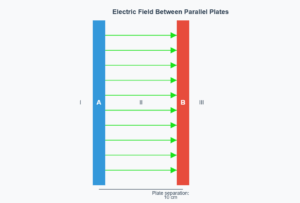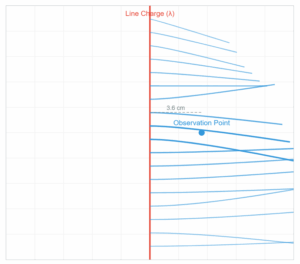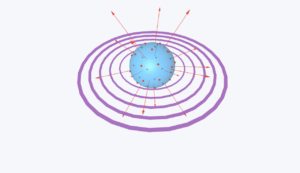Electric Dipole in 3D Uniform Electric Field
Interactive Physics Simulation - Visualize Torque and Dipole Behavior
3D Simulation Canvas
Loading Electric Dipole in 3D Simulation...
Dipole Controls
Electric Field Controls
About This Electric Dipole in 3D Simulation
This interactive simulation demonstrates the behavior of an electric dipole in 3D space when placed in a uniform electric field. The dipole consists of two equal and opposite charges separated by a distance.
Torque Formula: The torque on the electric dipole is given by: τ = p × E = pE sin(θ)
When the dipole moment (p) is aligned with the electric field (E), the torque is zero. When perpendicular, the torque is maximum. The dipole experiences a torque that tends to align it with the field direction.
Interaction Controls: Use your mouse to rotate the view (left-click drag), zoom (scroll), and pan (right-click drag) to explore the electric dipole in 3D from different angles.
Understanding Electric Dipole in 3D Uniform Electric Fields
An electric dipole in 3D space consists of two point charges of equal magnitude but opposite sign (+q and -q) separated by a distance d. When placed in a uniform electric field, the dipole experiences fascinating physical phenomena that are crucial to understanding molecular behavior, material properties, and electromagnetic interactions.
What is an Electric Dipole?
The electric dipole moment is a vector quantity defined as p = qd, pointing from the negative charge to the positive charge. In 3D space, this vector can point in any direction, making the visualization and understanding of dipole behavior more complex and interesting than 2D representations.
Behavior in Uniform Electric Fields
When an electric dipole in 3D is placed in a uniform electric field E, several key phenomena occur:
- Torque: The dipole experiences a torque τ = p × E (cross product), which tends to rotate the dipole to align with the field
- Zero Net Force: In a uniform field, the forces on the positive and negative charges cancel out, resulting in no net translational force
- Rotational Motion: The torque causes the dipole to rotate until it aligns with the field direction
- Potential Energy: The system has potential energy U = -p·E (dot product), which is minimized when aligned
Applications of Electric Dipoles in 3D
Understanding electric dipoles in 3D uniform fields is essential for:
- Molecular Physics: Many molecules have permanent dipole moments and align in external fields
- Dielectric Materials: Polarization of dielectrics involves alignment of molecular dipoles
- Microwave Technology: Microwave ovens work by rotating polar molecules using alternating fields
- Liquid Crystals: LCD displays use electric fields to orient dipolar molecules



